The inaugural Casablanca Chess tournament took place over the weekend of May 18-19, 2024. This unique event featured chess grandmasters Magnus Carlsen, Hikaru Nakamura, Viswanathan Anand, and Amin Bassem competing in the new “Casablanca chess variant,” a format designed to honor the history of chess. The play began from positions taken from historical games, chosen by Grandmasters Hicham Hamdouchi and Laurent Fressinet.
On the second day, Magnus Carlsen, leading with 2.5 points out of 3, won another game and drew two for a final score of 4.5 out of 6. Carlsen is the winner of the first Casablanca chess variant tournament. Hikaru Nakamura finished second with 3.5 points, followed by Viswanathan Anand with 3 points and Bassem Amin with 1 point.

The first game of the second day began from a position selected by Women Grandmasters Dana Reizniece-Ozola (Deputy Chair of the FIDE Management Board) and Anna Burtasova (Casablanca Chess Press Officer). The choice was between Botvinnik-Tal 1960, Alekhine-Euwe 1935, and Ju-Goryachkina 2020. Dana and Anna chose a second position, describing it as “dynamic with chances for both sides, perfect for spectators.”
The original game, Game 3 from the 1935 World Championship match, was won by Alekhine in 41 moves. It derived from the double-edged Winawer Variation in the French Defense. The game continued 9.Ne2 Nbd7 10.Ng3 Rg6.
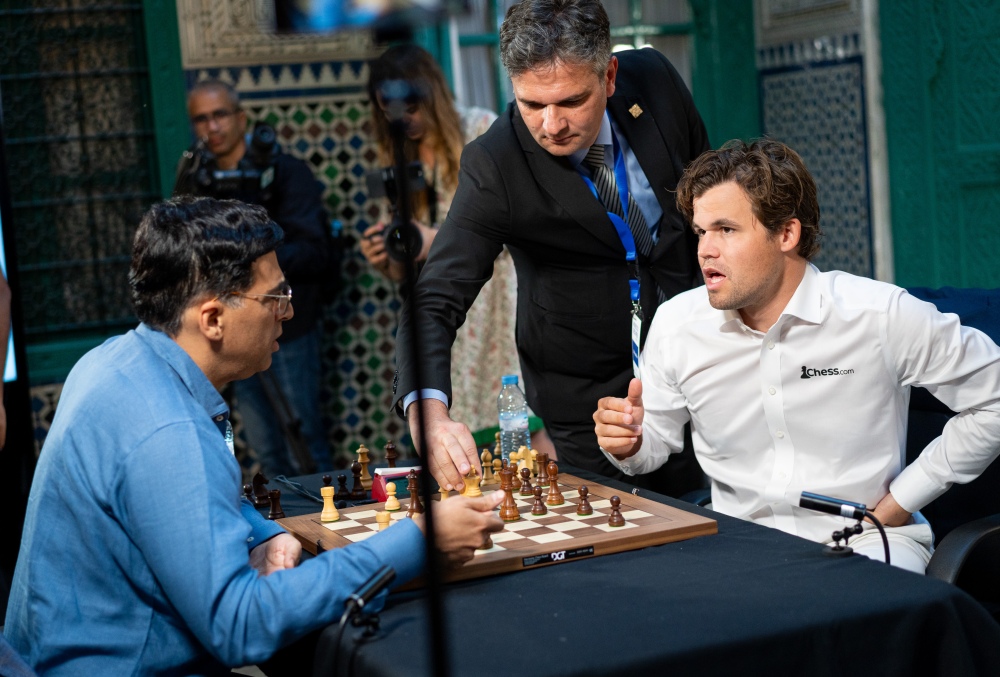
Viswanathan Anand and Magnus Carlsen followed the original game for two moves before Carlsen deviated with 10…Qa5. Despite an initial advantage for White, the game soon balanced out. Carlsen found a beautiful way to force a draw by sacrificing his rook on g2.

19… Rxg2+ 20. Kxg2 Nf4+ 21. Kg1 Nh3+ 22. Kg2 Nf4+ 23. Kg1 Nh3+ ½-½
In another game, Bassem Amin, playing White against Hikaru Nakamura, deviated right away by playing 9. dxc5. The players quickly exchanged queens and reached an equal endgame. However, Nakamura gradually outplayed Amin and secured a win.
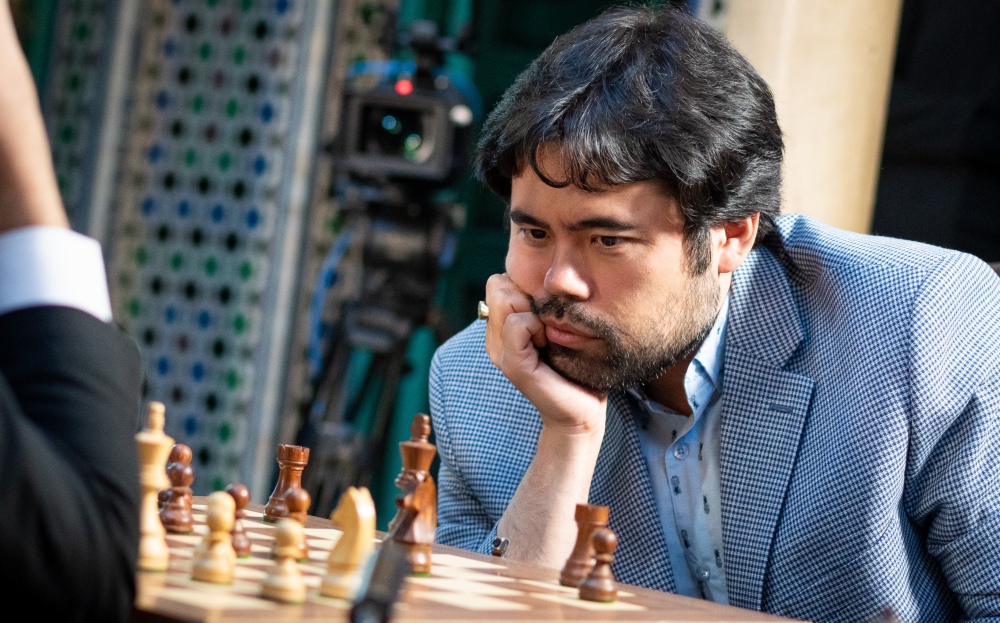
Nakamura shared his thoughts after the game: “I thought that this position was actually a little bit better for White, a little easier with the two bishops; it felt like Black would have to prove the equality. I would have been much happier to play on the white side. I got a little bit lucky because my opponent tried to simplify, but the simplification was just bad, in my opinion.”
The position for Round 5 was chosen by the YouTube and Twitch audience. It was a close run between Kasparov-Karpov 1987, Ushenina-Hou 2013, and Zhu-Kosteniuk 2001.

The Kasparov-Karpov game won by a slight margin of 37.17% votes against Ushenina-Hou with 35.65%. The final game of the 1987 match between Kasparov and Karpov was selected. It finished in a 64-move win for Kasparov.
“…someone ran into the meeting room to announce, “Karpov resigned!” It was, without question, the loudest and longest-standing ovation I had ever received outside my native country. […] I had done what Karpov had failed to do in 1985: won the final game and drawn the match to retain my title.” – wrote Garry Kasparov in “How Life Imitates Chess” (2007, Bloomsbury Publishing USA).
The original game continued 9.Nc3 Ne4 10.Ne2 a5 11.d3 Bf6 12.Qc2 Bxb2 13.Qxb2 Nd6.
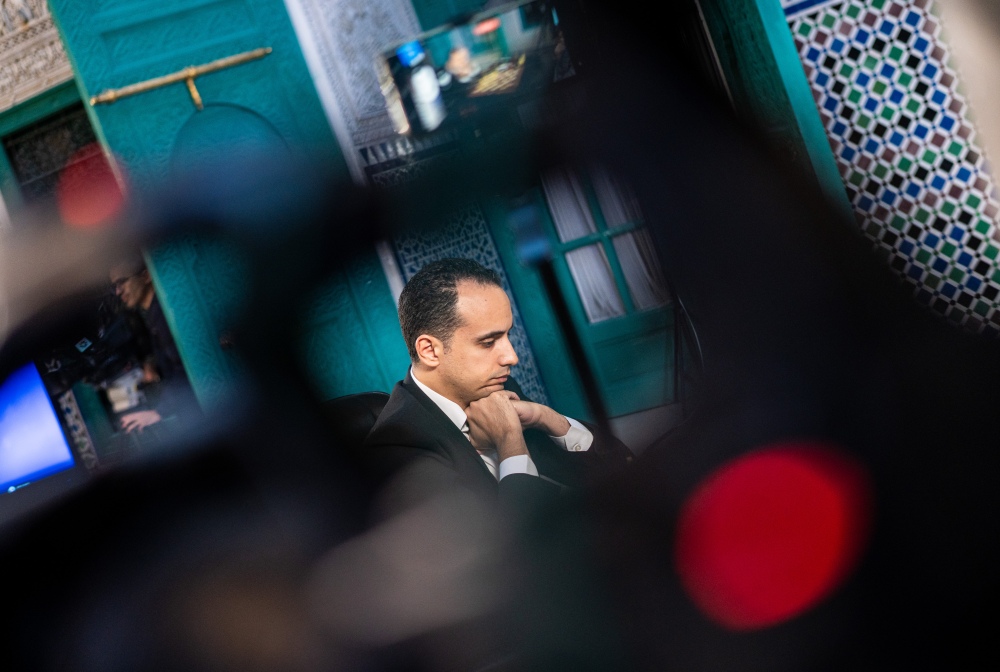
Both Hikaru Nakamura, with White against Viswanathan Anand, and Magnus Carlsen, with White against Bassem Amin, chose 9. Qe2. Both Nakamura and Carlsen went for a plan of extending their kingside pawns, but with different effects: Nakamura-Anand ended in a draw, whereas Carlsen gained the upper hand against Amin.
Going into the final round, Carlsen was in the lead with 4 points, followed by Nakamura with 3. The American player needed only a win with Black against the leader to force a playoff for first.
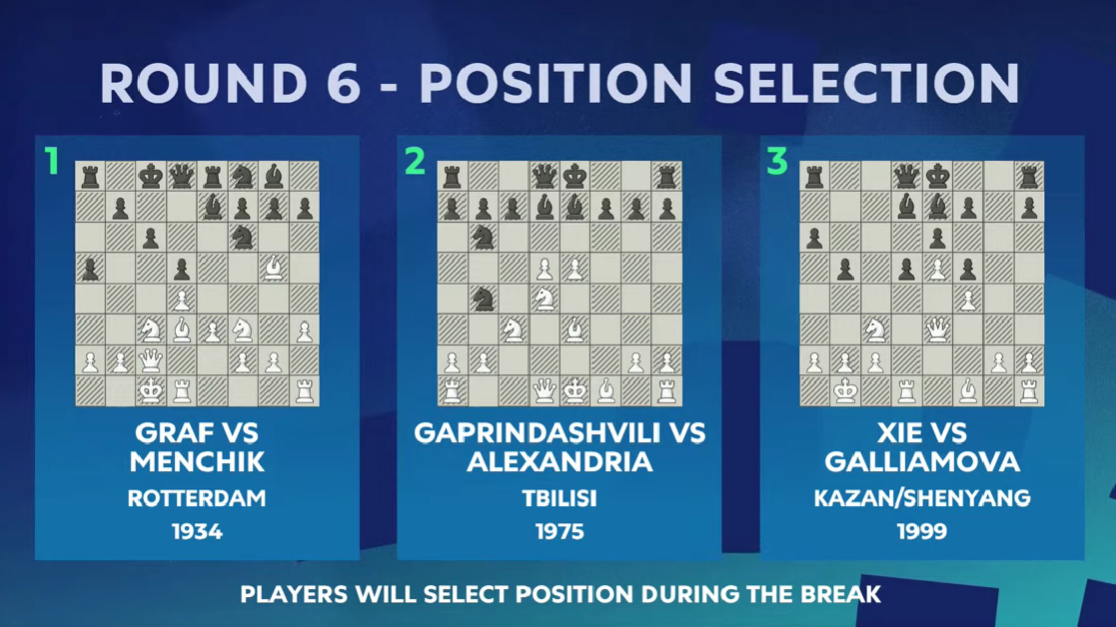
The players chose the starting position for the final game from the three options from women’s games: Graf-Menchik 1934, Gaprindashvili-Alexandria 1975, and Xie-Galliamova 1999. All players except Amin chose the third one, and so they had to start the games from move 15 in Game 2 of the 1999 Women’s World Championship.
The original game continued with immediate assault on the kingside: 15.g4 fxg4 16.h3 gxh3 17.Bxh3 Qc7 18.f5 O-O-O. Anand opted for 15. Ne2, following up with g4 a move later. He capitalized on Amin’s blunder on move 23 and quickly converted his advantage to a win.

Magnus Carlsen repeated the original game, deviating on move 18 with 18. Qg1. On the 24th move, Carlsen got a great position after adventurous 24… Qf2 from Nakamura. However, on move 27, the Norwegian did not find the best continuation, giving away the advantage with 27. Rh8. After that, the game quickly ended with a repetition, making Carlsen the winner of the tournament.
Magnus Carlsen expressed his enjoyment of the innovative format: “It was a fun format for sure, I would definitely like to try it again. With one exception in game two, all the positions were very rich with lots of play. It doesn’t really matter if you are playing White or Black, because you know that the position is equal and there are chances for both sides. It is also a lot of fun to end up in positions that I don’t play too often. I enjoyed it a lot.”
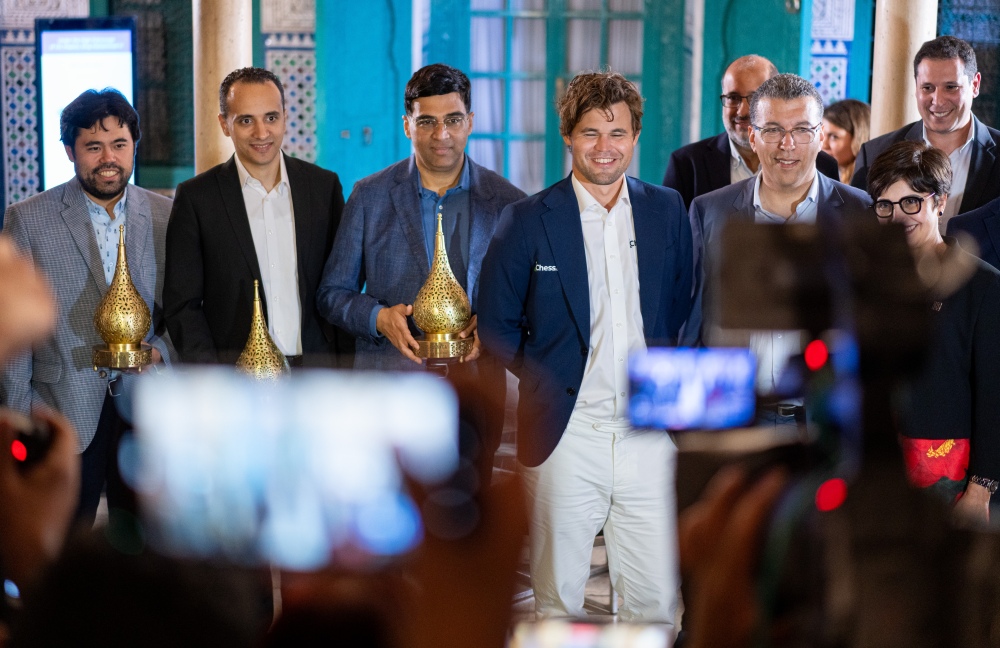
At the closing ceremony, Tarik Senhaji, the CEO of the Casablanca Stock Exchange, said that the organizers of the Morocco Chess Week were very grateful for the High Patronage of His Majesty King Mohammed VI. Senhaji expressed his gratitude to the event’s organizers and partners. These included the Casablanca Stock Exchange, Casablanca Events & Animation, the International Chess Federation, and the Royal Moroccan Chess Federation. He extended his heartfelt thanks to all those who worked tirelessly to ensure the event’s success. He also acknowledged the local chess enthusiasts whose daily presence and enthusiasm added to the vibrancy of the venue.
Tarik Senhaji was joined on the stage by Dana Reizniece-Ozola (Deputy Chair of FIDE Management Board), Bouchra Kadiri (President of the Provisional Committee in charge of the Moroccan Royal Chess Federation), and the “board masters” Hicham Hamdouchi and Laurent Fressinet who selected the historical positions.

As the audience erupted in applause, the players were presented with their well-deserved awards. Nakamura, Anand, and Amin each received traditional cups. Magnus Carlsen, the winner, was bestowed with a sophisticated trophy shaped like a knight.
Photos (please attribute the photographer when using): Dropbox
Live Broadcast: Casablanca Chess 2024 – Chess.com
Official Website: Casablanca-Chess
Written by Anna Burtasova, Casablanca Chess Press Officer
Photos by Lennart Ootes

